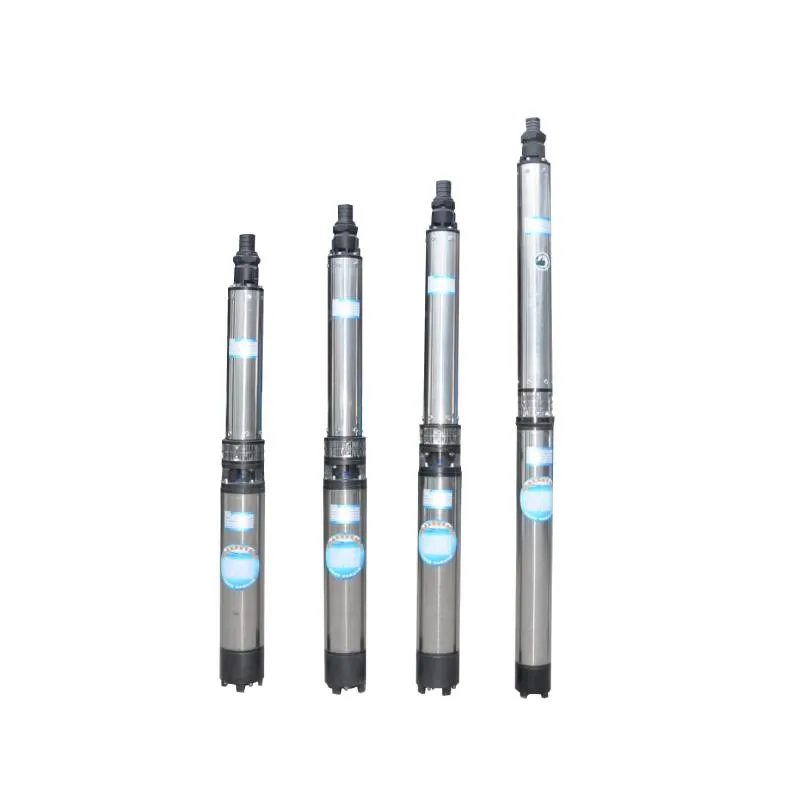Dec . 04, 2024 09:08 Back to list
changing submersible well pump
Changing Submersible Well Pumps A Comprehensive Guide
Submersible well pumps play a crucial role in providing a reliable source of fresh water for various applications such as residential drinking water, agricultural irrigation, and industrial processes. However, like any mechanical system, these pumps can encounter issues that necessitate replacement or maintenance. This article outlines the key factors to consider when changing a submersible well pump, ensuring you get the job done efficiently and effectively.
Understanding Submersible Well Pumps
Submersible well pumps are designed to be submerged in water and are typically used in deep wells. They consist of a motor and pump assembly that works together to move water from the well to the surface. These pumps are favored for their efficiency and capability to operate at varying depths, making them ideal for both residential and commercial use. However, over time, wear and tear can lead to reduced performance, necessitating a replacement.
Signs of a Failing Submersible Well Pump
Recognizing the signs of pump failure is essential for timely replacement. Common indicators include
1. Reduced Water Flow A noticeable decrease in water output can signal that the pump is failing. 2. Unusual Noises Grinding, sputtering, or loud noises can indicate mechanical issues within the pump. 3. Frequent Cycling If the pump turns on and off more frequently than usual, it may be struggling to maintain pressure or water levels. 4. High Energy Consumption An increase in electricity costs can suggest that the pump is working harder than it should be due to inefficiency.
Steps to Change a Submersible Well Pump
If you've determined that your submersible well pump needs to be replaced, follow these steps to ensure a successful change
1. Gather Necessary Tools and Equipment
Before beginning the replacement process, gather the necessary tools, including a wrench, pliers, a crane or hoist (for deep wells), and safety gear. Additionally, obtain a replacement pump that matches the specifications of the old one.
Safety comes first; therefore, ensure the electrical power to the well pump is turned off. This prevents any electrical hazards while you work.
changing submersible well pump

3. Remove the Pump from the Well
Using a hoist or crane, carefully pull the pump out of the well. It’s vital to do this slowly and steadily to avoid damaging the pump or well casing. If the pump is particularly heavy or deep, consider enlisting the help of a professional.
4. Inspect the Old Pump
Before installing the new pump, inspect the old one for issues. This can help you understand what went wrong, allowing you to avoid similar problems with the new pump.
5. Install the New Pump
Follow the manufacturer’s instructions for installing the new pump. Ensure all connections are secure, and the pump is positioned correctly in the well. This step is critical for ensuring optimal performance and longevity.
6. Reconnect the Power
Once the new pump is securely in place, reconnect the power supply. Check for any leaks in the connections and test the pump by running it for a short period. Observe the water flow and listen for any unusual sounds.
Maintenance Tips for Longevity
To prolong the life of your new submersible well pump, consider the following maintenance tips
- Regular Inspection Check your pump every few months to ensure it is operating efficiently. - Water Quality Testing Test the water quality regularly, as high levels of minerals can affect pump performance. - Monitor Energy Use Keep an eye on energy consumption as an increase may indicate a problem.
Conclusion
Changing a submersible well pump may seem daunting, but with the right preparation and understanding, it can be a manageable task. By recognizing the signs of wear, following the proper steps for replacement, and maintaining the pump diligently, you can ensure that your water supply remains consistent and reliable for years to come. Always consider consulting a professional if you encounter challenges beyond your expertise, ensuring the integrity and safety of your water system.
-
Submersible Water Pump: The Efficient 'Power Pioneer' of the Underwater World
NewsJul.01,2025
-
Submersible Pond Pump: The Hidden Guardian of Water Landscape Ecology
NewsJul.01,2025
-
Stainless Well Pump: A Reliable and Durable Pumping Main Force
NewsJul.01,2025
-
Stainless Steel Submersible Pump: An Efficient and Versatile Tool for Underwater Operations
NewsJul.01,2025
-
Deep Well Submersible Pump: An Efficient 'Sucker' of Groundwater Sources
NewsJul.01,2025
-
Deep Water Well Pump: An Efficient 'Sucker' of Groundwater Sources
NewsJul.01,2025
-
 Submersible Water Pump: The Efficient 'Power Pioneer' of the Underwater WorldIn the field of hydraulic equipment, the Submersible Water Pump has become the core equipment for underwater operations and water resource transportation due to its unique design and excellent performance.Detail
Submersible Water Pump: The Efficient 'Power Pioneer' of the Underwater WorldIn the field of hydraulic equipment, the Submersible Water Pump has become the core equipment for underwater operations and water resource transportation due to its unique design and excellent performance.Detail -
 Submersible Pond Pump: The Hidden Guardian of Water Landscape EcologyIn courtyard landscapes, ecological ponds, and even small-scale water conservancy projects, there is a silent yet indispensable equipment - the Submersible Pond Pump.Detail
Submersible Pond Pump: The Hidden Guardian of Water Landscape EcologyIn courtyard landscapes, ecological ponds, and even small-scale water conservancy projects, there is a silent yet indispensable equipment - the Submersible Pond Pump.Detail -
 Stainless Well Pump: A Reliable and Durable Pumping Main ForceIn the field of water resource transportation, Stainless Well Pump has become the core equipment for various pumping scenarios with its excellent performance and reliable quality.Detail
Stainless Well Pump: A Reliable and Durable Pumping Main ForceIn the field of water resource transportation, Stainless Well Pump has become the core equipment for various pumping scenarios with its excellent performance and reliable quality.Detail
